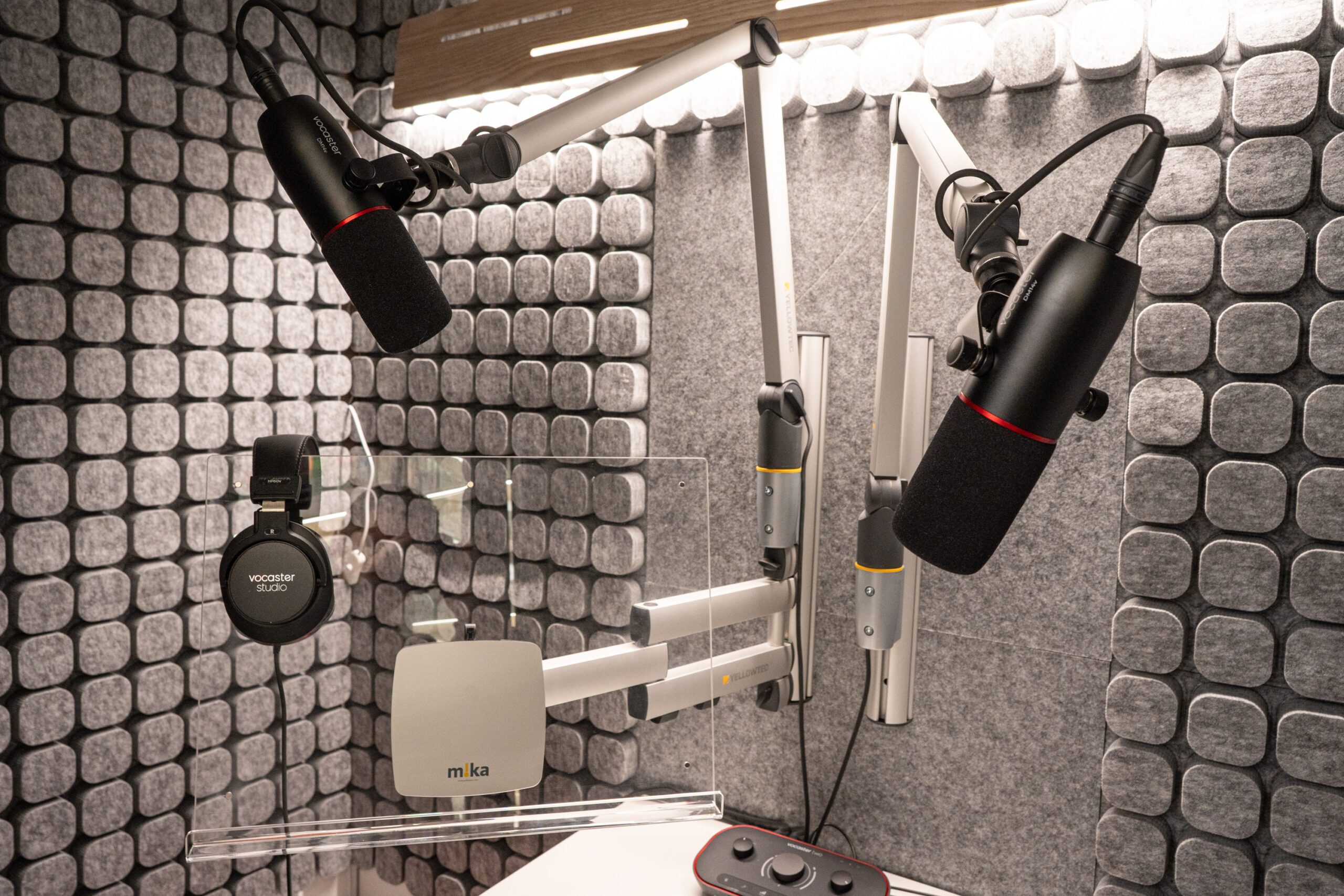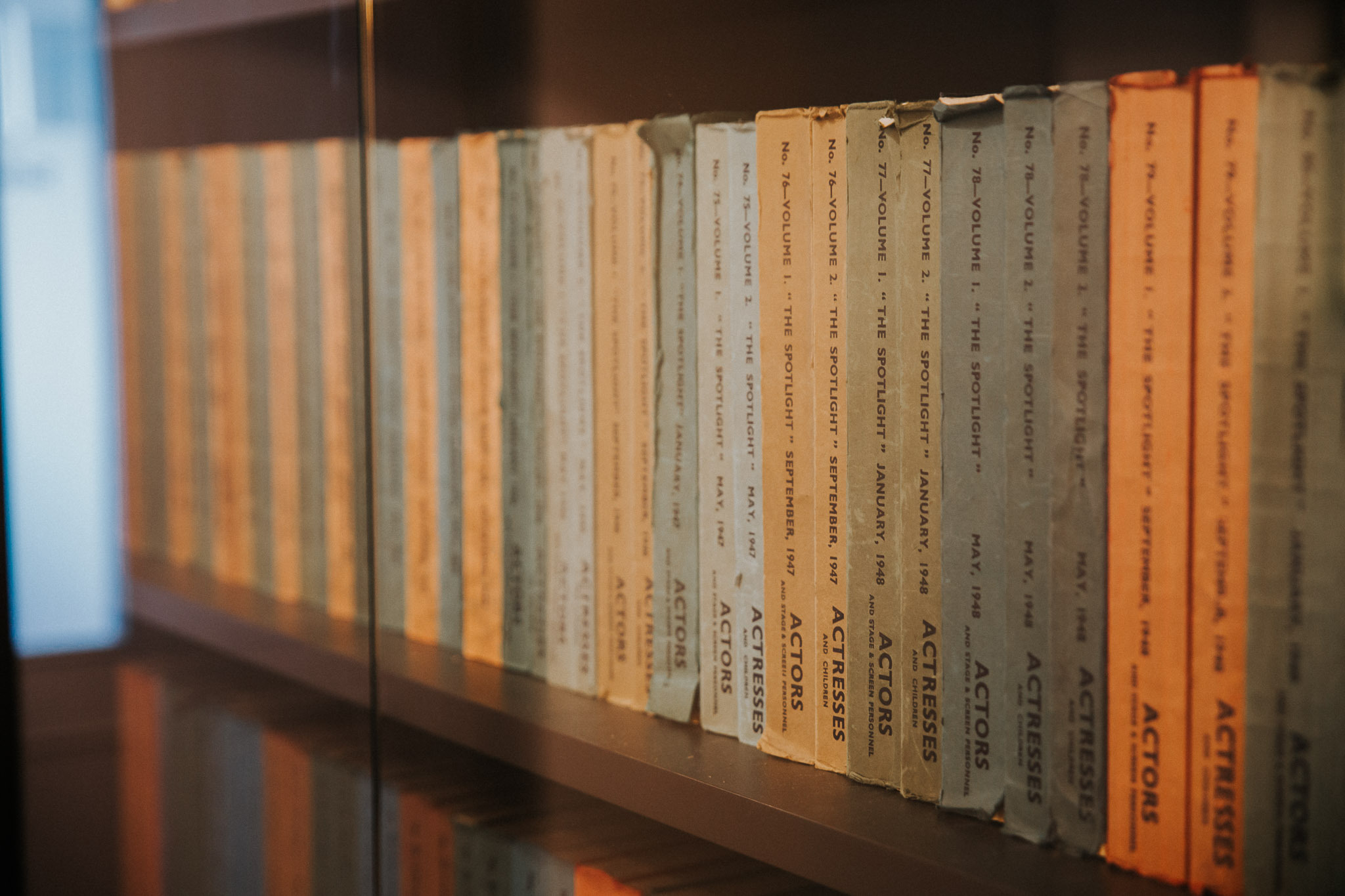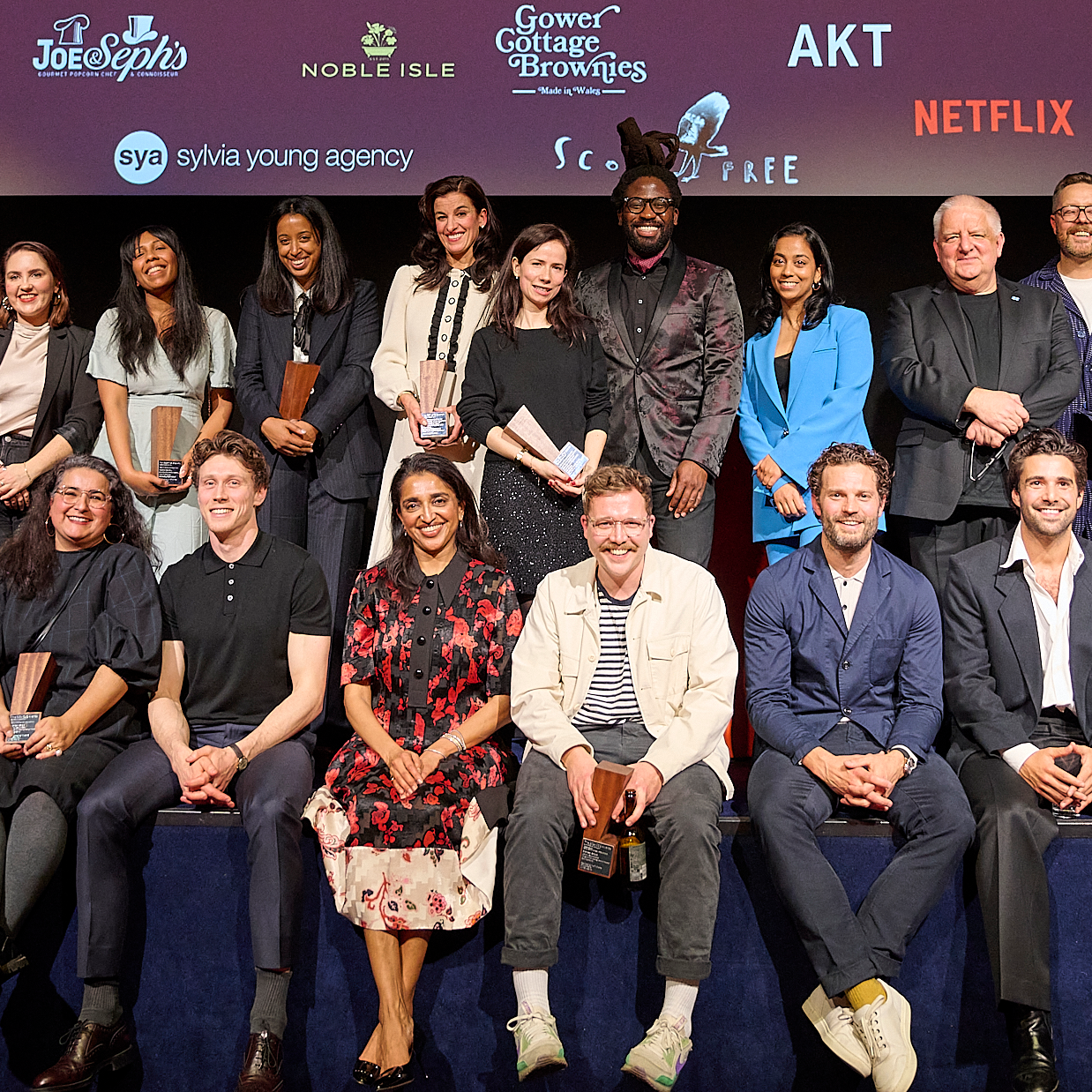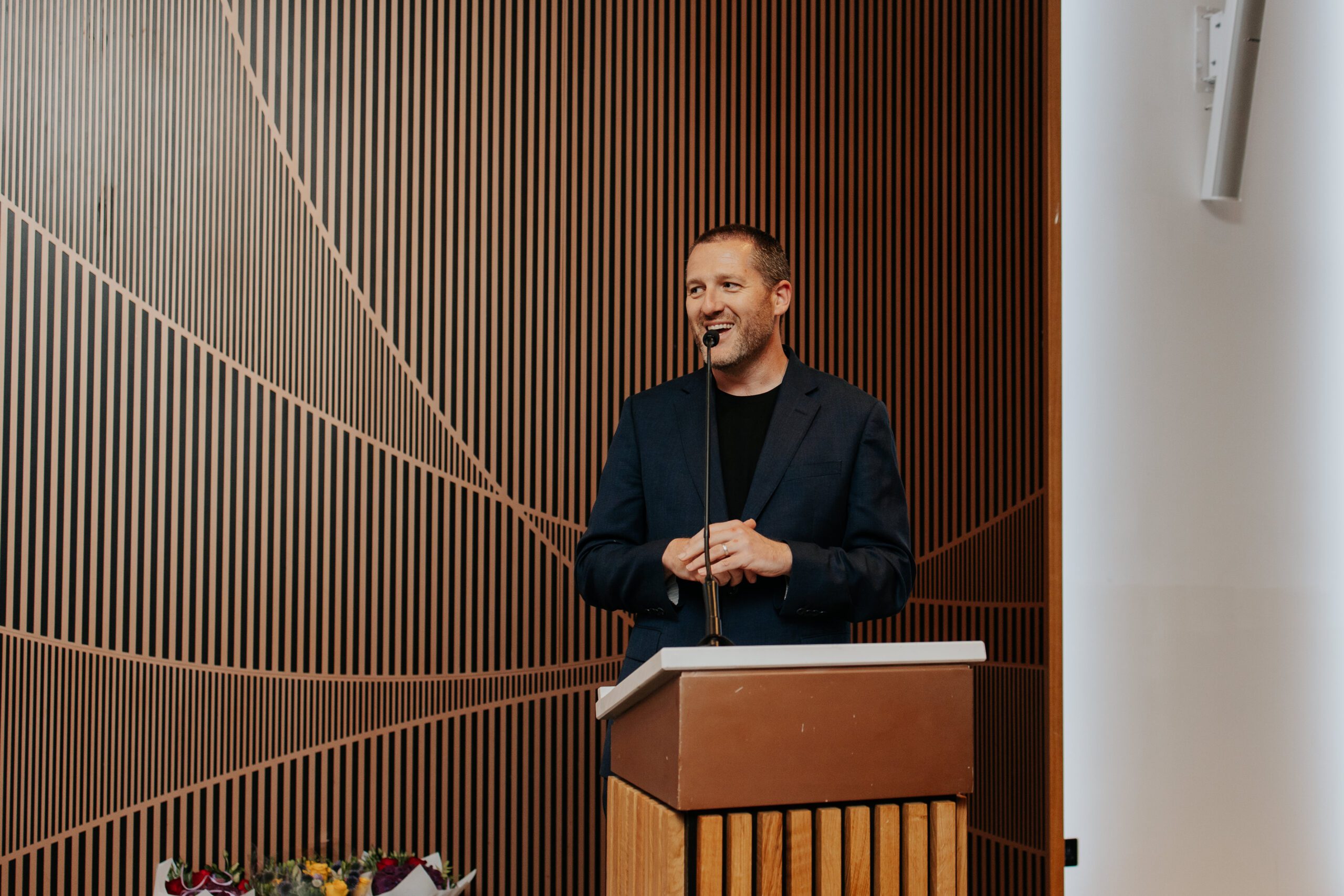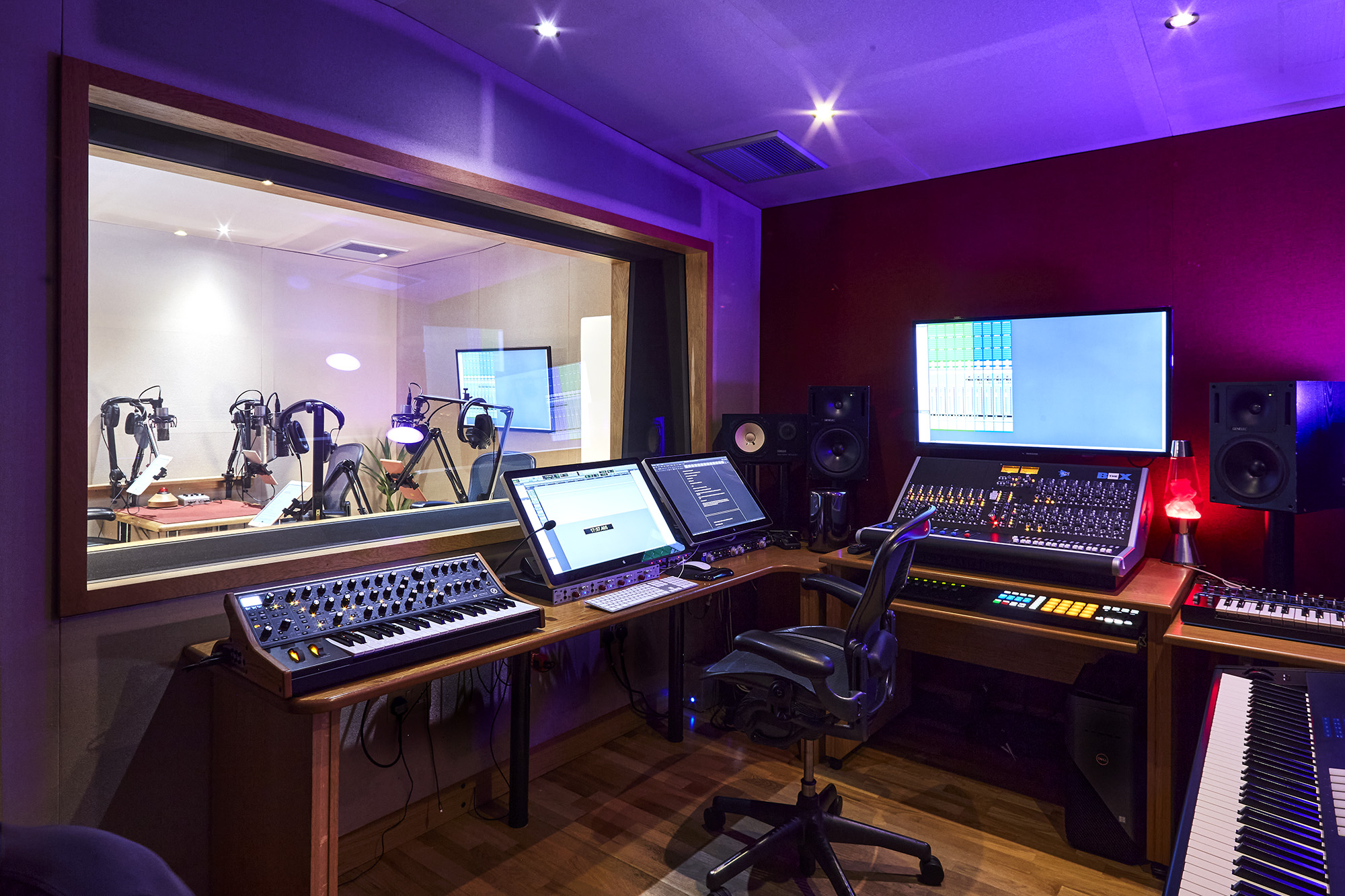Spotlight talks to Kickstarter’s Gemma Seltzer all about how you as a creative can turn your vision into reality and create your own work by getting the money you need using crowdfunding.
Gemma not only works with artists at Kickstarter, but also previously worked at Arts Council England and runs the Write and Shine early morning writing sessions. We talk about what projects work well on crowdfunding platforms, how to make sure your project stands out, what you’ll need to think about and prepare to succeed in your funding efforts, and lots more.
35 minute listen or the full transcript can be found below.
All episodes of the Spotlight Podcast.
Read more on Kickstarter and check out their Creator Handbook as a great place to start with your own project funding. Gemma also mentions a great resource called A Creative Person’s Guide to Thoughtful Promotion.
Christina Carè: Hello, and welcome to this episode of The Spotlight Podcast. My name is Christina Carè. I work at Spotlight and today we are talking all things funding. In particular, we’re talking about crowdfunding and Kickstarter with Kickstarter’s own, Gemma Seltzer. Gemma is a very creative person, herself. She is a writer. She runs Write & Shine, morning writing sessions, and she’s previously worked at The Arts Council England. Her work is all to do with supporting artists in the UK, and hopefully today we’ll be able to answer some of your questions about how you can make your project a reality.
So, whether you’re dreaming of taking your own show to the Edinburgh Fringe next year, or getting your short film off the ground, there’s definitely something in this podcast for you. Take a listen.
Christina Carè: Gemma, thank you so much for joining us on the Spotlight Podcast.
Gemma Seltzer: Thanks for having me.
Christina Carè: I’m really excited to talk to you today because this is quite a different topic for us to cover, but it is about really taking ownership of your own work as an artist, and how you can actually get the money to make it real. I want us to start by asking you, you work at Kickstarter, how did you get into that line of work? What sort of brought you to helping develop other artists in the way that you do?
Gemma Seltzer: Great question. I lead on Kickstarter’s work in the UK and specifically in the arts and cultural categories. My job involves me travelling around, connecting with artists and organisations, bringing new projects to life, and that’s always been a passion for me. I’ve worked as a writer for many years. I make digital literature and performance and collaborative work. I’m working currently on a series of short stories-
Christina Carè: Which sound great by the way. You were just telling me off-air.
Gemma Seltzer: I did my elevator pitch in the beginning. It’s a collection that’s about women’s voices and cities and ventriloquism. So I’m currently working on my own projects, so I’m really excited about it. And I also run Write & Shine early morning series of events, writing events in London, and alongside that doing the Kickstarter work.
So for me, there’s always been a beautiful jigsaw of working life. Like how do we make a living as artists? What is it we want to put out into the world? And for me, there’s something about always trying to balance the creative work I’m doing and giving back to the creative community.
So, the job for me at Kickstarter is about nurturing creatives, helping people being confident, creating the conditions for them to realise their ideas through crowdfunding. I feel because I’m a creative as well, I understand the challenges of sharing your work, the challenges of doing something independently, when is the time to bring people in and collaborate, and when is the time it’s just great to put something out in the world and see what happens. The Kickstarter role, for me, brings together other things I’m passionate about. And it also involves travelling around the country quite a lot.
Christina Carè: That’s not bad.
Gemma Seltzer: Not bad. So I’m in London, but I’m also in Bristol and Manchester and Edinburgh and other creative cities sharing the opportunities that Kickstarter brings. I love that as well. I find it’s fascinating to spend time with other artists and find that inspiring for my own work as well.
Christina Carè: For sure, I bet. I think it’s really interesting at this point in time that things like Kickstarter have become so popular and so many different kinds of people use Kickstarter as far as I can tell. It’s not just artistic projects, there’s lots of other kinds of things on there as well. Is there some particular kinds of projects that you think generally end up on Kickstarter? Is there a kind of quality to them?
Gemma Seltzer: No. It’s a very democratic platform. Kickstarter is kind of the biggest online platform for creative projects. I guess it’s everything from comics, books, films, games, design technology, and they’re all brought to life through the direct support of other people. And it’s been 10 years since we’ve launched. And during that time, I think the figure is 167,000 projects have been brought into the world. And it’s such a wide spectrum. So I love your question because I can answer: as much as you can imagine. From tiny projects in limited editions of a hundred to large scale film projects or technology projects that raise hundreds of thousands, if not millions of pounds. There’s a really wide range across all the categories.
And I suppose it’s useful to know that in theatre and the performance categories, it’s huge as well, very diverse and vibrant. So from the massive plays, live art and dance, all kinds of pieces, productions from opera companies, local community groups, bringing artist-led work to Kickstarter. I think it’s fair to say that a lot of people are exploring Kickstarter and crowdfunding as a way to share their ideas out in the world.
Christina Carè: For sure. What do you think it is that attracts people to Kickstarter in particular or to crowdfunding as an option? Is there something, I don’t know… Because I feel as though oftentimes if you wanted to get funding for something in a more traditional sense, let’s say, your project has to be quite fully realised or imagined already. Do you think that’s the kind of benefit of a platform like Kickstarter? Do you have to have a fully realised project in the same way?
Gemma Seltzer: People come to Kickstarter at all different stages of their process. Some, when it’s a very early idea and they kind of want to test it with people. Does it work? Is it of interest? And also, in the later stages when they’ve kind of got everything fully together and they just need some funding and support and taking it to the kind of final stage.
I think one of the main reasons people would come is because it’s so open for everybody, it gives you full creative autonomy over your project. You get to make all the decisions in bringing the people that you really care about your work and collaborate with them. I think it opens up the choices you can make as an artist. So you can decide on the cover for your book, you can decide on the kind of spaces you to use to showcase the work. And really, I think more and more people are behind the idea that culture and creativity really belongs to everybody. And removing gatekeepers is a big part of that process.
What happens if anybody and everybody could make art and share their ideas with the world? Well, then it becomes much more diverse. You start hearing from voices that perhaps underrepresented in their industries and you get to push the boundaries. You take some risks. You get to explore new ideas.
I guess it’s naturally collaborative in some ways. I think even if you’re a writer, the work I do, where I sit quietly on my own, actually nothing is done in isolation. But the idea of joining together with people to bring something new in the world is really powerful. It’s your idea, but you’re creating a community around it and getting people behind it. And maybe it resonates with them, maybe it also matters with them. This idea of collaborative making and support I think is really powerful.
Christina Carè: It’s just such a lovely idea behind crowdfunding because it means actual people are engaged with what you’re trying to make, doesn’t it really? As opposed to just,as you said, a gatekeeper kind of bestowing legitimacy on you in some way. It’s actually, it could be your friends and your family and other people who are just interested in the arts kind of giving you their support, which is not just financial in a way.
I kind of want to dig into then, in terms of actually setting up a project on a platform like Kickstarter or trying to get into crowdfunding for the first time. Do you think there are sort of some key ways to get started? Are there sort of steps to success that people should know about?
Gemma Seltzer: Because it’s so open to everyone, one of the first things I suggest to us to do is to kind of really interrogate their motives for coming to Kickstarter. Because we see it as a storytelling platform. It is a place to get money, raise funds for your work, but it’s also a place to share your story and open up your ideas to a wider community and build up your audience and create a legacy for your work. There’s a group of people who will be supporting what you’re doing, not just for this project, but into the future as well.
I love to invite people to think of what reason they’re coming to Kickstarter. Aside from the funding, what other reason might you come to Kickstarter? And that’s a good place to kind of work out what’s unique about your project. Perhaps it’s about sharing the underrepresented voices in your community. Perhaps it’s about exploring something brand new in your art form and seeing kind of what can happen. Maybe it’s just about testing a particular notion that you’ve got. Whatever it is, whatever the reason is, really digging into that and bringing that to the fore, because that’s your story. That’s what’s unique about what you’re doing.
When we’re supporting artists to share their ideas, we often guide them away from more charitable language. So things like, “please help me”, or “please donate”, those kinds of things are less persuasive than, “we’d love you to join us on this journey to make this happen”, or, inviting people into the process somehow. Again, that’s a good tip. How can you balance out what you’re doing with the invitation for other people to be part of the journey and the process with you?
Christina Carè: I guess that kind of comes back to what you were saying before because it is a very inclusive… It’s crowdfunding, right? So the crowd is helping you make it, so you have to sort of invite them in somehow to the art-making itself. It’s quite a visual platform. Is there anything you could say in terms of how you visually represent your project? Are there sort of key ways to do that?
Gemma Seltzer: Yeah. Very nice question. I mean, it’s like the internet is all visuals. So as you’re building your project page, defining kind of a strong central image is great because that image that will lead it will be the kind of thumbnail on the site, it will kind of lead your project. So having a visually compelling main project image without text or banners or anything, just a strong image that really represents your project is definitely a tip we give people. And generally, show and don’t just tell, so the balance between text and telling people what you’re working on. And some images, high quality, maybe landscape images that show your creative process, that’s another thing to consider. Kickstarter is a great place to open up the work that you’re doing. So showing images of the studio or the rehearsal room or your sketchbook or your work in progress, are all the kinds of things that backers find compelling because we all love to get close to the creative process. So really seeing how individuals make something new in the world.
It’s a nice test as an artist. How much are you willing to open up and show people? How you make work from a pyjama-wearing in your bedroom with a cup of tea? What is it you will share with people? Because the reason people back projects is because they care about creative projects. They want to see something new in the world. It’s a generous act in some ways to open up your process and show them what the secret is, what’s the magic behind this work.
Christina Carè: Sure. So it’s like being generous in order to receive generosity. Isn’t it a kind of reciprocal thing there? Do you think there are key mistakes that people make when they’re kind of presenting their work? Is it just to do with that kind of openness or are there other sorts of things that could go wrong?
Gemma Seltzer: Key mistakes. I think it’s always important to start with a really strong idea and express it as clearly and honestly as possible. I think the whole platform, I mean, it’s a tool, Kickstarter’s really a tool for artists to use and I would love all artists to really feel like it’s a genuine opportunity, but it’s a tool that’s based on trust. So whatever you say about your project is what your backers are going to hear. There’s no need to elevate it or overhype it: “the best ever”, “the biggest ever”, “the most ever.” Actually, just being really clear and simple about what you’re doing and why you’re passionate about it is what backers need to hear. Because I think, what works really well on the platform is remembering that it’s about building a human connection. It’s human to want to give to something that you also care about. So what are the ways you can remain human? Even though it’s a digital platform, it feels like it’s other, it’s kind of elsewhere, but really what you’re trying to do is have a conversation with backers.
So, one thing that I notice, partly because I used to work at the Arts Council and in grant-giving. Sometimes the language is more, people present it like a pitch or in this elevated formal way. And actually, we find that writing as if you’re talking to a friend, so more conversational. Tell us about you, tell us about the ideas behind it. There can be kind of a tone change that I think is worth-
Christina Carè: That’s very interesting. Do you think that’s a remnant of the fact that maybe they’ve gone through more traditional kinds of funding? Is that maybe a feature of that sort of route?
Gemma Seltzer: I think so. Because that’s the way that artists generally secure funding, through pitching and proposing, writing long proposals to arts organisations and grant-giving organisations. Whereas this is you’re kind of talking to a community and trying to find a way that resonates with them. And a good test is, if you’re thinking of doing a Kickstarter campaign, is to just browse the site, find some projects that are perhaps similar to yours and see how they do it. Because there’s no wrong or right way of doing it. Everybody just finds a way that’s meaningful for them but look at their goals and the timeframe and the tone of voice they use. And see if you were going to back the project, what appeals to you, what kind of language do you like to hear?
I like it when the videos are a bit rough around the edges, awkward.
Christina Carè: It’s not a super high production value or something. It’s just honest.
Gemma Seltzer: Exactly. Why not? It’s a real person telling you that they really care about this idea. And for me, I’m much more likely to kind of have a connection with that person. I think, wow, you’re putting that out in the world. I’d love to help you make it happen.
Christina Carè: I want to ask you then just to pick up on something you’ve just said with the goals, do you think people get the kind of funding amount wrong? One of the things that feels like it might be a trap could be setting the money too high or too low to actually realise the project. Do you think there are kind of risks in that regard?
Gemma Seltzer: Maybe. One of our stats is that most projects on Kickstarter raise between $1 and $10,000. And actually, arts and cultural projects, film and theatre and performance and dance generally raise around that amount of money. So that’s something to bear in mind. Obviously, there’s examples of million-dollar projects or smaller ones, but nice to know that kind of one in $10,000 is the average.
I feel like particularly performers or theatremakers might come to Kickstarter almost as an emergency when there’s a gap in funding. And then, you know, this kind of in case of emergency style funding means that you actually haven’t had enough time to plan your project and you’re using Kickstarter to fill a gap in your funding. And you’re probably doing that at the same time as you’re trying to kind of work on ticket sales and do your production and marketing and everything else. So I think that’s kind of one of the things that we’re really focusing on, inviting, particularly theatremakers, to come to Kickstarter early, because actually then you’ve got more time to think it all through, to define your story and to create a buzz around what you’re doing in advance so that when your tickets do go on sale or when you start your push there’s already people interested in what you’re doing. You’re building up your mailing list, you’re building up your interest.
Kickstarter is a great place to do some storytelling, opening up your process early, letting people know really what you’re about and why your work matters. And then you’re doing it in a more kind of a longer lead time.
Christina Carè: They can go on the journey with you a bit more.
Gemma Seltzer: Yeah. So in some ways, that’s what we see quite a lot. Maybe the funding falls through, or actually, you haven’t got round to doing the fundraising that you need or ticket sales look lower than you expected and then people come to Kickstarter. But I think there’s just a way of thinking about it a bit earlier and having Kickstarter as part of your whole planning process because it’s also great for audience development and for marketing as well. So it can be one of the tools that brings together the other things you’re doing.
Christina Carè: For sure. Do you think then, having worked at Arts Council England as well, I just wonder, do you have a perspective on what sorts of projects just maybe don’t belong on Kickstarter or crowdfunding? Are there some sorts of projects that just belong better in a traditional funding method, or not really?
Gemma Seltzer: It’s not so black and white, I think. I guess I feel like crowdfunding should be part of your thinking in the early stages. It’s one of the ways you might share your ideas with others and do fundraising. I think thinking about how it fits in with your other goals make sense. So if it’s about audience building or community building or it’s a project with strong community impact or social impact, crowdfunding really works in that way because it’s about spreading a message, getting people excited and feeling like your project could resonate kind of far and wide.
So, like thinking about it early and thinking about it as part of a jigsaw. It’s one of the many pieces. And so maybe if you’re applying for Arts Council funding or other funding, you’re also thinking about how Kickstarter can play a role in that. I think the limitation, I guess, or one of the challenges with crowdfunding is it’s a very open process. It’s very generous to offer your ideas out into the world, but you have to be prepared for what that means, that you will promote it through your networks and champion it through organisations you’re working with. And it’s fair to say that some people will absolutely love it and it will resonate and it will really matter to them, and other people, they won’t care at all. And actually, with applying for grants, of course, it’s a more of a private process.
So, thinking about how open you’re feeling about your work and sharing it if it’s a very early stage, you might find that more difficult than if you’ve established exactly what you’re doing with it.
Christina Carè: So it’s really just your willingness to do that, I suppose. And if there’s a limitation in that sense, that could be a limitation of using the platform but it’s kind of bearing that in mind early as part of the plan.
Gemma Seltzer: Just because it’s all possible, I think it’s great to allow enough time to bring an idea to Kickstarter. We encourage a 30-day campaign and that is fantastic to work towards. One of the tips we have is to try and raise 20% or 30% of your goal in the first 48 hours. And actually planning, looking backwards, what steps do I need to take in order to get there?
Christina Carè: Because that’s the key statistic in terms of the ones that actually are successful, or..?
Gemma Seltzer: Yeah. It just gives a lot of momentum behind what you’re doing when you get kind of friends and family behind what you’re doing, there are people rallying around your idea. And it also alleviates some of the pressure and stress for you. I love saying to artists, “Life’s pretty stressful as it is. Don’t add Kickstarter to that list of things.” You’re lying awake at night, you’re worrying about it, the way to alleviate that is just some serious planning. If it’s a 30-day campaign, knowing what you’re going to be doing each of those days, having a plan for those four weeks just will really help you out. So during the days of the campaign, you know what you’re doing and you can respond to unexpected things rather than having to spend all your time kind of planning still.
Christina Carè: As you’re doing it. That makes sense. I wonder, it seems to me like more and more people are turning to crowdfunding in general. It seems to me this has to do with how the industry is changing and how arts funding in general is changing. What do you think makes it such a popular alternative? Is there a reason, or do you think there are changes in terms of traditional funding that have meant people are just stepping away from that method?
Gemma Seltzer: There definitely feels like there’s a movement like artists kind of gaining autonomy and feeling like they want to… We all understand the value of putting new ideas in the world. We’re living through difficult times, and if nothing else, all we can do is kind of raise our voices and put some work that matters to us out into the world. Crowdfunding, Kickstarter has really grateful projects of the moment. When there’s a particular moment in time for kind of politics or society, we see a wave of projects who are really responding to that. And it feels like Kickstarter can be a really great place to share those bold ideas that are responding to how we live now.
In fact, one of the things we’re doing in the UK, we’re running a spotlight on social practise projects. So artists that are specifically engaging with societal issues, with their communities, engaging with politics. We’ve got an artist development programme for 10 artists and we’re putting a spotlight on that particular area in the autumn. I think that just shows the power of Kickstarter and these spaces where the bolder projects, the projects that speak to our lives and what we’re living through, particularly in the UK right now, and why it matters. And asking other people to join in and share their voices and be part of a movement, really.
Christina Carè: For sure. I definitely think just in terms of my own observations, it seems as though, particularly with the rise of things like streaming platforms like Netflix, etc. it’s very hard for independent, particularly filmmakers to get funded in the UK at the moment. So if you’re listening and you’re in that situation, that might be a reason to turn as well. If you’ve got a particular message that you need to speak on, it might be a good idea to turn to something like crowdfunding.
I wanted to just put a listener question to you, Gemma, if you don’t mind. We did ask people on our various social media platforms if they were interested to ask you a question. We’ve had a couple of similar ones, but I’ll read you this one. It’s from a Luke.Montague on Instagram, who says that everyone seems to be using crowdfunding options to fund projects. So it Luke’s already on board with the concept, but he wants to know how would you stand out from the crowd given that it is becoming increasingly utilised as a way of funding projects?
Gemma Seltzer: Great question. Absolutely. We see more and more people turned to Kickstarter and find it a really meaningful way to not just raise money, but share their ideas with the world and build a community around what they’re doing. Successful projects.
We’ve touched on a couple of the things. I mean, maybe I’ve got a few top tips. The first is this idea of working out what your story is. I think you will know that, so it’s worth spending some time, brainstorming and interrogating and thinking about why it is you’d come to Kickstarter and being able to summarise that in a really strong single sentence that kicks off your project page. And again, as I say, don’t overemphasise it, be really honest. What is the reason you’re coming to Kickstarter and why does your work matter? If you are passionate about the project, then inevitably other people will care about it as well.
So, I think being really clear what your story is. I think that can be a challenge because often when we’re creating work, it’s got so many different themes and collaborators and aspects of it. I think trying to simplify and clarify and come up with one central idea, one central story is kind of a way to help people understand what you’re doing and therefore want to kind of pledge and support what you’re doing.
I think we mentioned as well earlier show, don’t just tell. When I’m looking at draft project pages, honestly the first piece of feedback is often to add images. There’s plenty of projects that come through that are just text all the way through. I guess we have to be honest about people’s attention spans and what the internet is like, what we’re all like actually. Bite-size information, short paragraphs, you can use bold on your project page, you can use images that illustrate and punctuate your points. Treat it as a visual storytelling platform, so even if you’re not ready to launch your Kickstarter straight away, start collecting those images that say something about the work you’re making. So, definitely making it stand out through the visual means.
Another thought is the rewards. We always say, there are actually three ways that you tell your story on Kickstarter. One is through the project description and kind of this idea of putting lots of visuals in and really having a central story. And then also the video, so plenty of people feel it’s hard to be on camera actually, but, we spoke earlier about the value of a human connection. People want to see who’s behind a project. It can be a really great hook for people to kind of see that there’s a real person living their real life, and they just really care about this idea and really want you to support it.
So, the description and the video and the rewards as well. So the rewards also tell your story. So thinking about unique rewards that are really coherent and reflect something of the project and your story and the people behind it.
Christina Carè: The rewards, just to explain a little further, are the sorts of things you give in exchange, right, for funding?
Gemma Seltzer: Exactly, exactly. So you would have a list of rewards at different tiers, different levels, and people pledge at that level to receive what’s on offer. And we see rewards as tokens of gratitude rather than a transaction. Kickstarter’s not a store in that way. So thinking about if someone is supporting your project by giving them some money, how would you like to thank them? And it might be again through sharing some aspect of your creative process.
For example, in film artists using Kickstarter might share some of their props or a signed copy of their script or photos of the cast as rewards that people pledge on. So you’re getting a little insight, you’re getting something from the project itself and you get a little token of thanks as parts of it. So, making sure the rewards tell the story of what you’re doing as well. Because it’s all about opening up your practice and inviting people to be part of the journey to make something brilliant and new in the world. That’s a kind of a good way of standing out. Some unique rewards and some fun ones that really share what you’re doing with others.
Christina Carè: I kind of want to know, have any stood out to you in terms of rewards you’ve seen offered on the side?
Gemma Seltzer: There’s often like an acknowledgement reward. So for £1-2, the artists would thank you for your support. That can be a simple as your name in the credits of the film or in the programme or the book. But sometimes it’s really kind of a concept or an idea.
I remember Saul Williams, the poet, had a kind of spoken word film on Kickstarter last year. I think for $1 you would be visited in your sleep by a magical chu-chu bird, who would whisper great dreams to you or something. It was part of the, the story he was telling about the film. And I think, a couple of hundred people pledged on that reward just for a dollar to get what is… It’s a concept, it’s an idea, but it was fun. So those kinds of things are good.
And I guess, there’s a really nice example from the Movement Company, which are US theatre company, and their project was called What To Send Up When It Goes Down. They had a reward level, which was a seat for you, a seat for me. So you pledged at that level and you sponsored a ticket for a member of the community, a young person, and they got a ticket for yourself as well.
Christina Carè: That’s nice.
Gemma Seltzer: So this idea of kind of paying it forward as well. And the theme of the work was about loved ones that you’ve lost and kind of how you surround yourself with people who you care about and care about you. So it made sense that there was this kind of pay it forward aspect to the rewards level.
In that way, for me, that’s something that can really stand out. A unique reward that says what you want to say about your project. I love that.
Christina Carè: I really like all of those examples. I would totally go for those rewards. So if people wanted to actually get in touch directly with Kickstarter, is there a way that they could learn more directly from the business in terms of how they should do their projects?
Gemma Seltzer: We’re often out and about in the world. Actually, Kickstarter often collaborates with like-minded organisations who care about supporting and enabling artists. In 2019, we’re partnering with The Fringe Society actually, on a set of health and wellbeing events at Fringe Central during August in their performer hub. We’re offering office hours actually on August 6. So you can drop into the hub and spend time with a Kickstarter member of staff to get some advice. And all around that, actually that partnership with Fringe Society, we’re offering one-to-one coaching on people’s projects, there’s a Fringe cast. There’s an online webinar that details how to bring a performance project to Kickstarter. And there are other incentives along the way. So yeah, that’s kind of one key date, the August 6, when we’ll be at Fringe Central.
Christina Carè: Perfect. You can drop into Spotlight’s wellbeing sessions and then drop into Kickstarter’s.
Gemma Seltzer: It’s all about wellbeing.
Christina Carè: Thank you so much, Gemma. I just kind of want to finish up by asking you for any final advice. If someone’s looking into doing alternative funding for the first time and whether or not there are any resources they should know about? Or alternatively, how can they ask questions?
Gemma Seltzer: Well, yes. So Kickstarter’s website, kickstarter.com has a creator handbook, which actually is a really great guide for everything from setting up your page, troubleshooting, how to build rewards. So that’s definitely a good first step. We also have an online magazine that’s called The Creative Independent. That is a great again, resources for kind of emotional and practical advice on living your life as a creative and sustaining your creative practice. And there’s plenty of advice. And one piece that I really love on there, one article is called A Creative Person’s Guide To Thoughtful Promotion. And that’s something we haven’t talked about so much today. But, you build a beautiful page and your rewards are amazing and unique, how is it that you then share it with the world whilst staying true to yourself and thinking through everything you need to do in order to make the biggest impact?
So, Creative Person’s Guide To Thoughtful Promotion is a really great how-to guide and how we as artists can use our full selves to promote what we’re doing. So kickstarter.com is definitely somewhere to go. You can follow me on Twitter. I’m often sharing advice and events I’m doing. So that’s just @gemseltz, and I’m happy to hear from anybody who’s thinking about a project and kind of offer advice and follow up with what they’re doing.
I just want to say kind of one final thing which is, one of the things that’s really great about Kickstarter and people don’t always know is that we’re a public benefit corporation and it’s a type of legal structure that is a for-profit company that has this mission, our core, so to help bring creative projects to life. And so things like a positive impact on society and fighting inequality and champion arts and culture is kind of within our DNA. As artists, it feels like a great place to share your ideas. It’s set up by artists. Most people who work at Kickstarter are artists. It’s a very nurturing and supportive space for artists. I hope when you start looking at resources and start building your page, it really feels like that it’s something that is for artists and for you.
Christina Carè: Perfect. On that note, thank you so much, Gemma.
Gemma Seltzer: Thanks for having me.
Christina Carè: Thanks for listening to this episode of The Spotlight Podcast. If you have more questions about how you can crowdfund your own projects, head over to the Kickstarter website. Keep in mind as well that Kickstarter have lots of development partnerships with other arts organisations like the Edinburgh Fringe and Shooting People, so keep an eye out for those.
If you’ve got a question you’d like us to answer in an upcoming podcast, drop us an email at questions@spotlight.com. That’s all for now from the home of casting.
Got more questions you want answering in an upcoming podcast? Email us at questions@spotlight.com. Find Gemma on Twitter @gemseltz.







